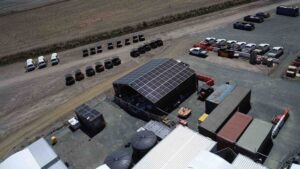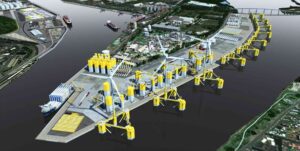Network utility TransGrid has become the latest energy utility to spin off a part of its business in response to an accelerating energy transition, announcing the creation of Lumea, a spin-off company focusing on grid services for renewable energy projects.
TransGrid, which currently manages a significant share of New South Wales’ electricity network infrastructure, will use Lumea to expand its presence in the ‘competitive’ markets for network connections and infrastructure.
The creation of Lumea will also help the company expand into markets outside of Transgrid’s traditional base of New South Wales, with the ‘business growth’ unit within TransGrid – which forms the basis of the new Lumea entity – having already completed the Deer Park Terminal Station in Melbourne.
Much of the remaining TransGrid business will focus on its regulated asset base, including major transmission infrastructure and the development of new projects – including the connection of Snowy 2.0 to the grid, HumeLink and the EnergyConnect interconnector between New South Wales and South Australia.
TransGrid CEO Paul Italiano said that the decision to crave out the commercial arm of its business, which will be named Lumea, will allow the new company to undertake a larger expansion into the competitive market for network connection services.
“The energy industry is undergoing rapid and fundamental changes, and Lumea is at the forefront of providing a range of solutions to make a better power system for Australians,” Italiano said.
While AGL Energy announced that it would soon spin off its fossil fuel assets into a separate business, TransGrid’s move to create its own spin-off business is motivated by a desire to have an increased focus on serving the emerging clean energy sector.
Through being split off from Transgrid, Lumea will take with it a portfolio of existing customer relationships, with involvement across 9,000MW of renewable energy projects currently operating or under construction.
This will include the New England Transmission Infrastructure development, which is preparing to undertake some of Australia’s first network capacity auctions, with up to 1,400MW of new wind and solar projects set to be connected to the grid through the project.
Lumea will also take responsibility for the development of the Wallgrove Grid Battery in Western Sydney, which is being supported by the Australian Renewable Energy Agency to provide a demonstration of the ability for batteries to provide grid-scale synthetic inertia and ‘storage-as-a-service’.
Transgrid’s executive general manager for business growth, Richard Lowe, will step into the CEO role for the new Lumea entity.
Lowe said the new entity would be able to take a greater focus on serving the emerging renewable energy sector and that the creation of the Lumea subsidiary was a recognition of the shift occurring within the energy system towards cheaper and low emissions sources of electricity.
“Our energy system is facing a critical point. The scale of renewable energy generation to date has been substantial but we know more is required and more solutions are necessary to effect the transition to a clean energy future,” Lowe said. “We have an opportunity now to leave a legacy for generations to come.”
“Lumea is at the forefront of the transition to that future. Renewable energy is the cheapest form of electricity in the market and by accelerating that transition we’re enabling the delivery of low-emission, affordable power in greater amounts than ever before.”
Lowe said that the creation of Lumea as a separate entity had come following feedback from Transgrid’s customers, who had been looking for a dedicated provider of infrastructure services for new generation projects.
In recent years, grid connections have become a major source of frustration for developers of new wind and solar projects. A Clean Energy Council survey of business confidence within the sector identified grid connection processes and underinvestment in network capacity as the two top business challenges facing the sector.
A significant backlog of grid connection works has seen a number of wind and solar projects either delayed from being connected to the grid, or curtailed once connected, as a result of network congestion and a lack of available capacity.
Key to Lumea’s business offering, the company said, is to maintain an ongoing relationship with generation projects, helping to manage their initial connection to the grid, as well as servicing that connection throughout the life of the project.
“Lumea is at the forefront of the transition to that future. Renewable energy is the cheapest form of electricity in the market and by accelerating that transition we’re enabling the delivery of low-emission, affordable power in greater amounts than ever before,” Lowe said.
Lumea will also takeover Transgrid’s telecommunications business, which currently serves around 100 wholesale and public sector customers, with around 4,000 km of fibre optic network across NSW and Victoria.
Transgrid will remain the ultimate owner of th Lumea entity.









